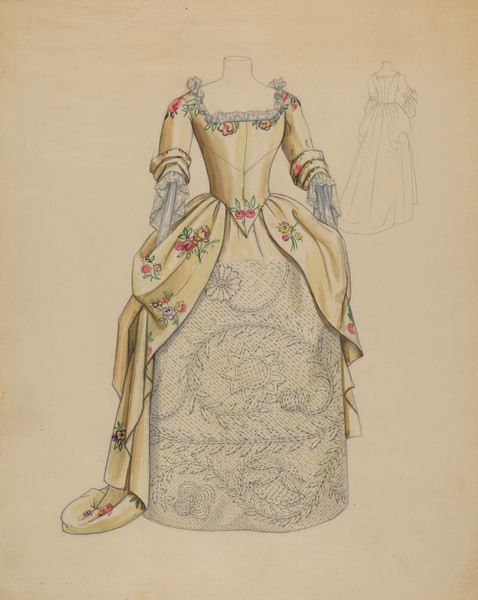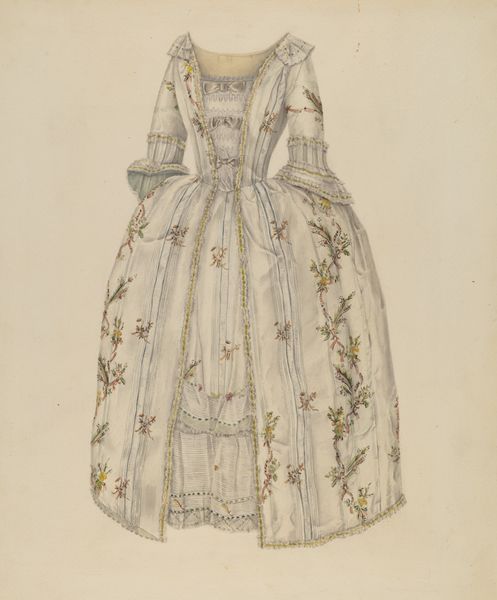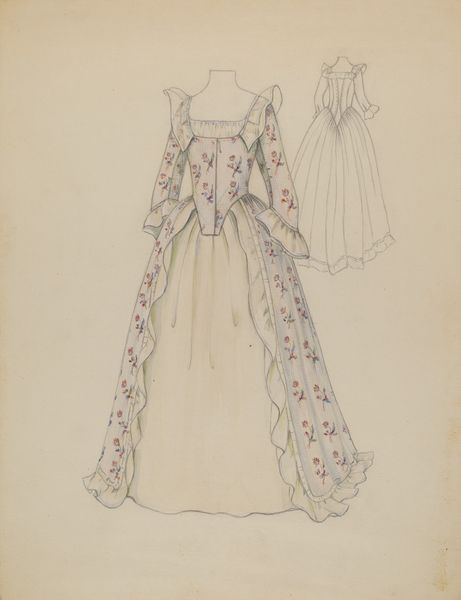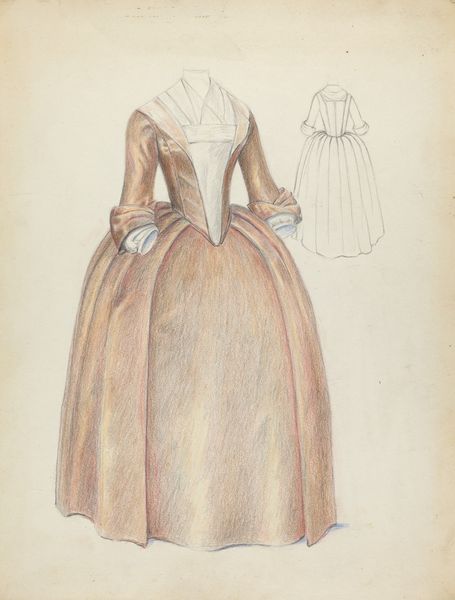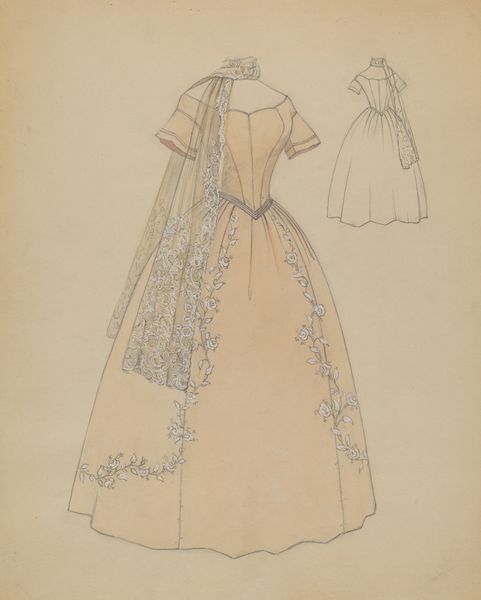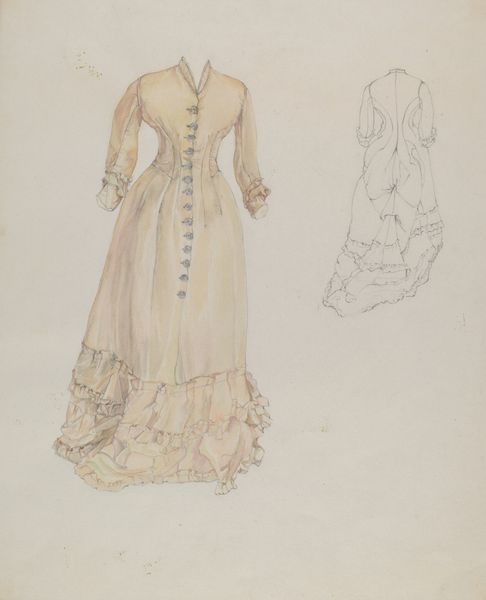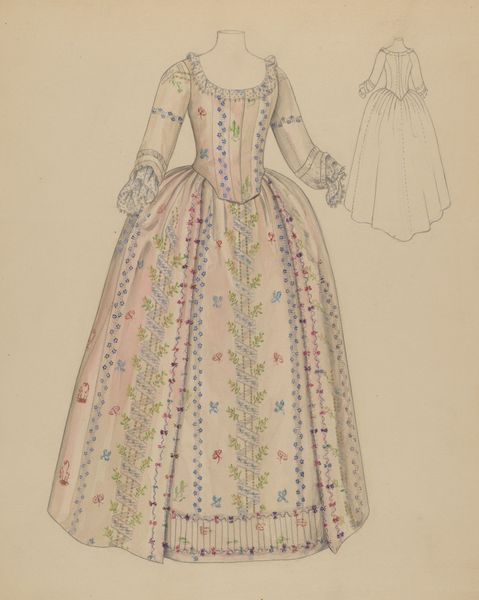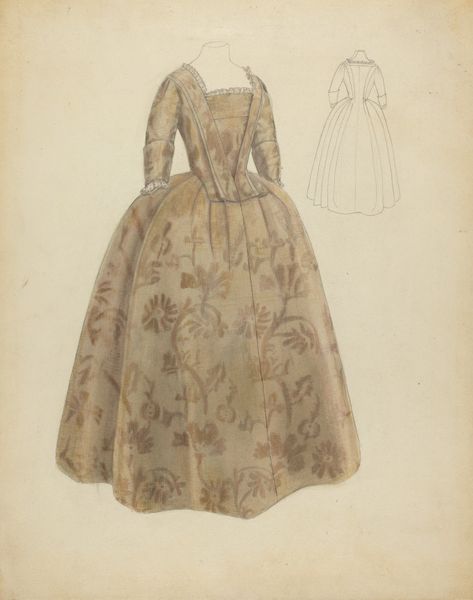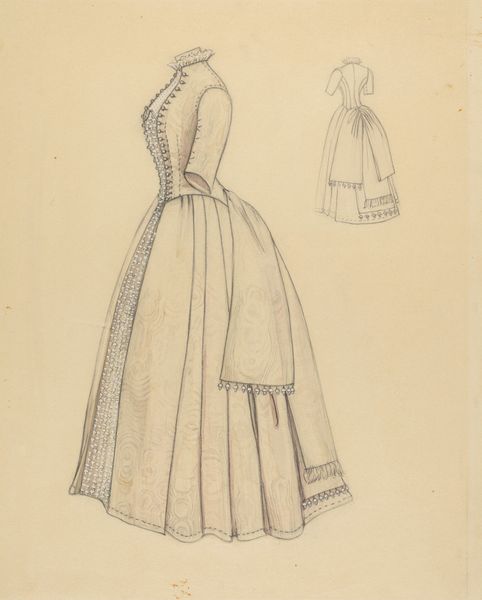
drawing, coloured-pencil, paper
#
portrait
#
drawing
#
coloured-pencil
#
paper
#
decorative-art
Dimensions: overall: 30.5 x 22.8 cm (12 x 9 in.)
Copyright: National Gallery of Art: CC0 1.0
Curator: Jessie M. Benge created this coloured-pencil drawing on paper around 1940; it's simply titled "Dress." It strikes me as something of a period piece—I find it rather haunting. What are your immediate impressions? Editor: Immediately, I'm drawn to the lace detailing and the pale-yellow hue. It evokes a sense of fragile femininity, something almost ghostly. The absence of a figure gives it an ethereal, timeless quality, doesn't it? Curator: Absolutely. Considering the era, just prior to the US entry into WWII, this isn't just a pretty picture. It could represent the constraints placed on women. The dress, though elegant, is almost like a gilded cage. Think about the social expectations, the limited opportunities... Editor: Yes, I see the symbolic weight. The dress, often seen as a symbol of domesticity and beauty, can also represent confinement. The meticulous detail in the lace, perhaps speaks to the obsessive nature of societal expectations imposed on women during that era. There is something archetypal at work too: The fairytale princess is a popular meme which still persists today. Curator: Precisely! And we should examine how those expectations intersected with race and class. Whose body was this dress really designed for, and whose stories are omitted from this picture? Was it attainable glamour or simply a visual reminder of social division? Editor: That shadow work is critical to understanding its power. We must ask what that perfect silhouette promises to those allowed access versus those excluded from even imagining themselves inside this dream. Thinking about it I find my reading shift, this is no benign sketch, its something unsettling... Curator: Exactly. By analyzing not just the art but also the silences and the subtexts, we reveal a great deal. Editor: Indeed, delving into these layers exposes the symbolic codes within it. It's more than just a beautiful dress. Curator: It's a reflection, however imperfect, of the socio-political moment it emerged from and an indication of trends and ideas, then and now. Editor: Agreed. By viewing its cultural artifacts, we gain crucial insights into ourselves, then and now.
Comments
No comments
Be the first to comment and join the conversation on the ultimate creative platform.
